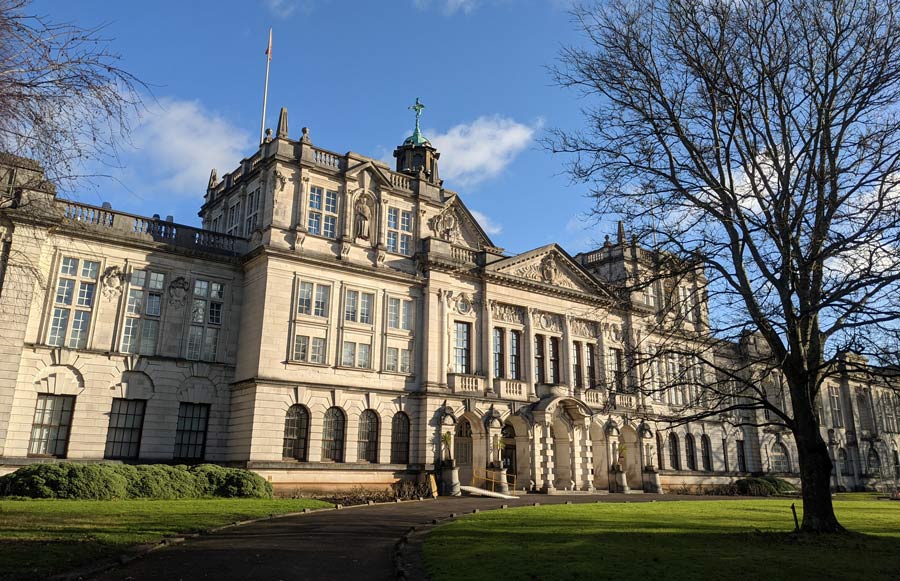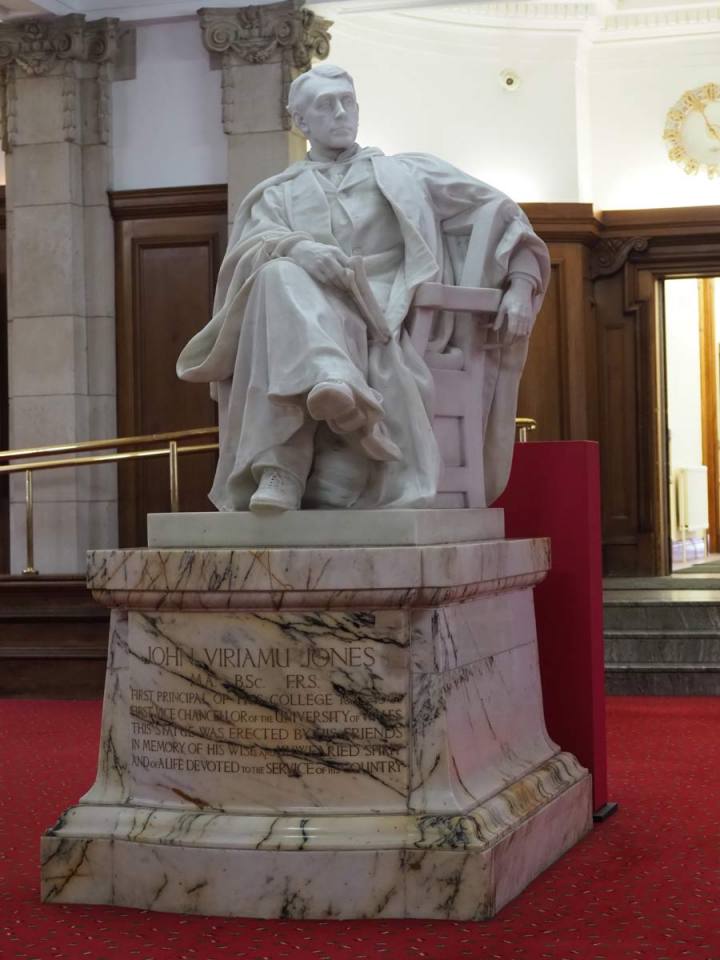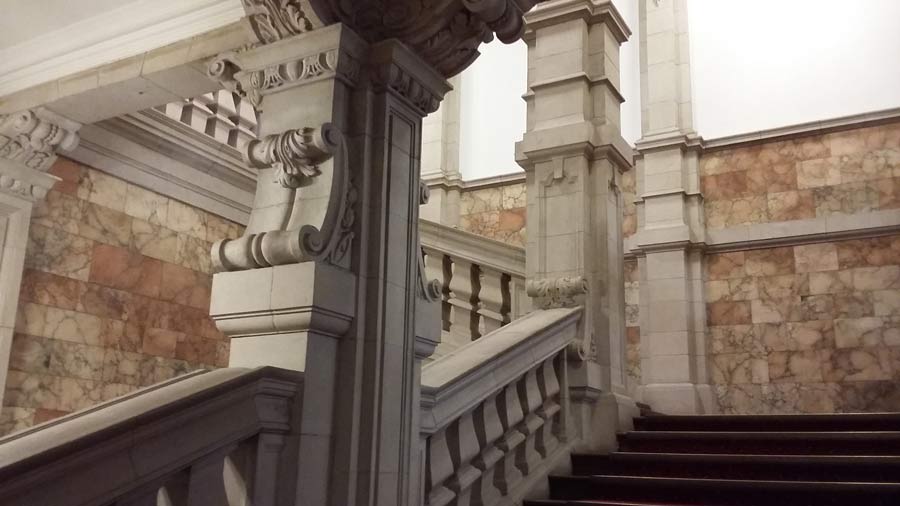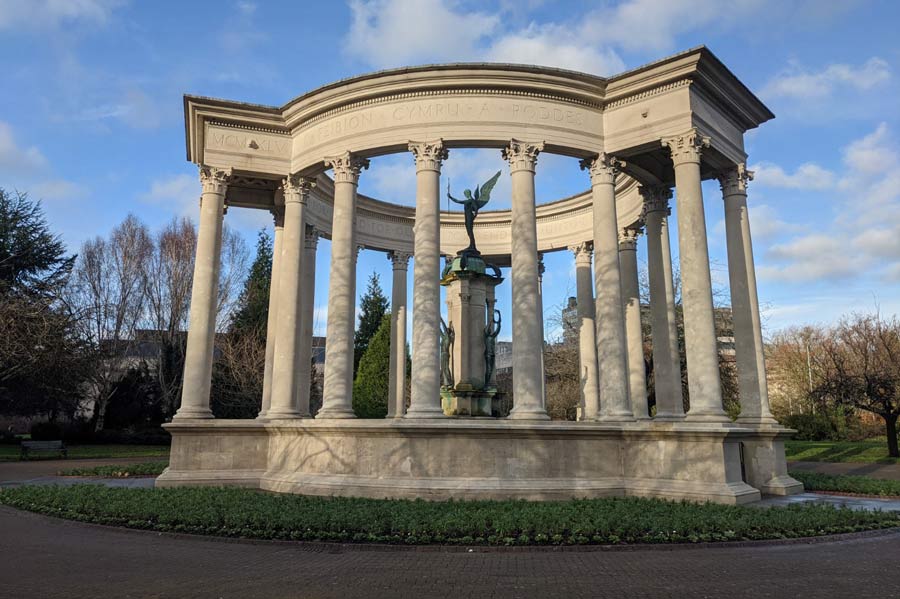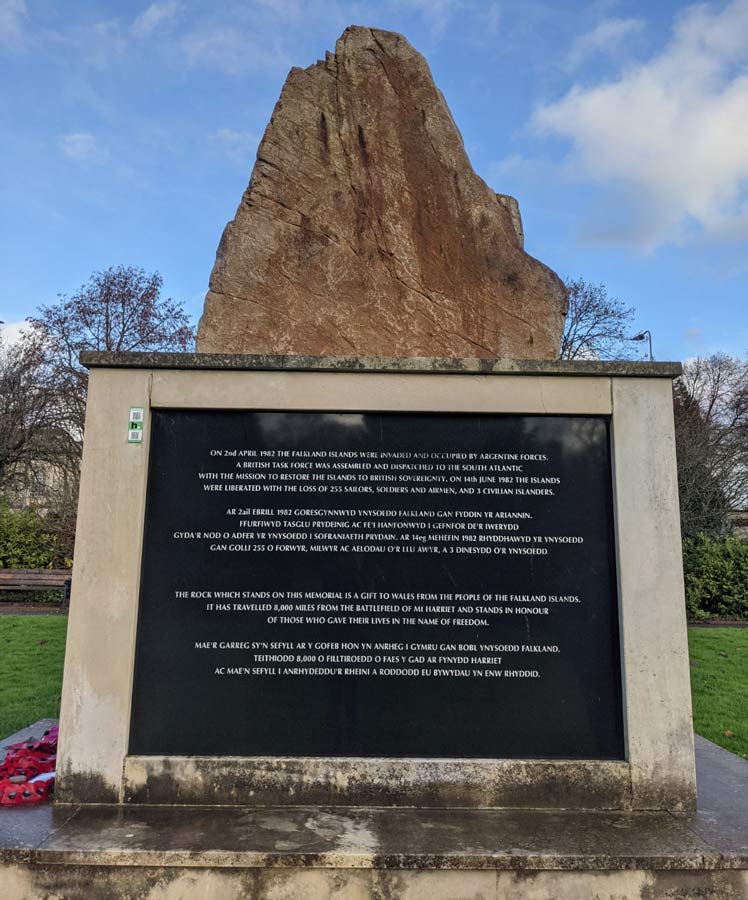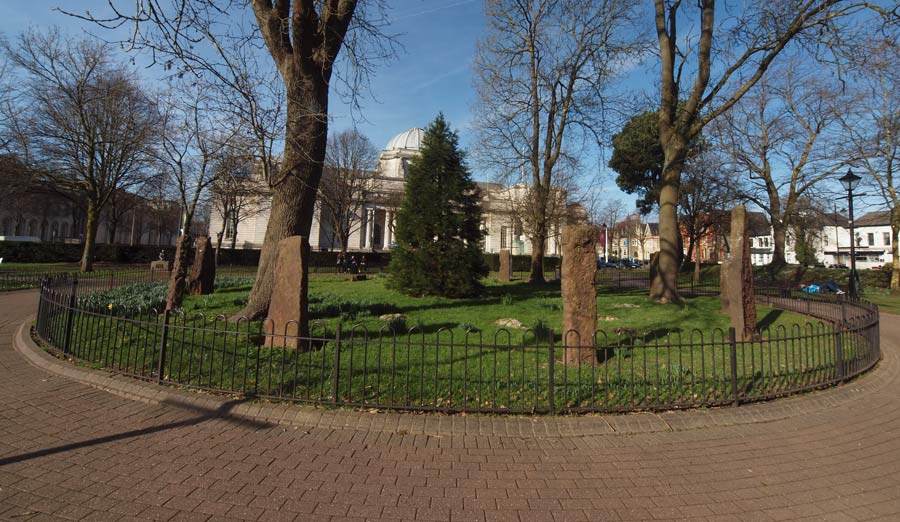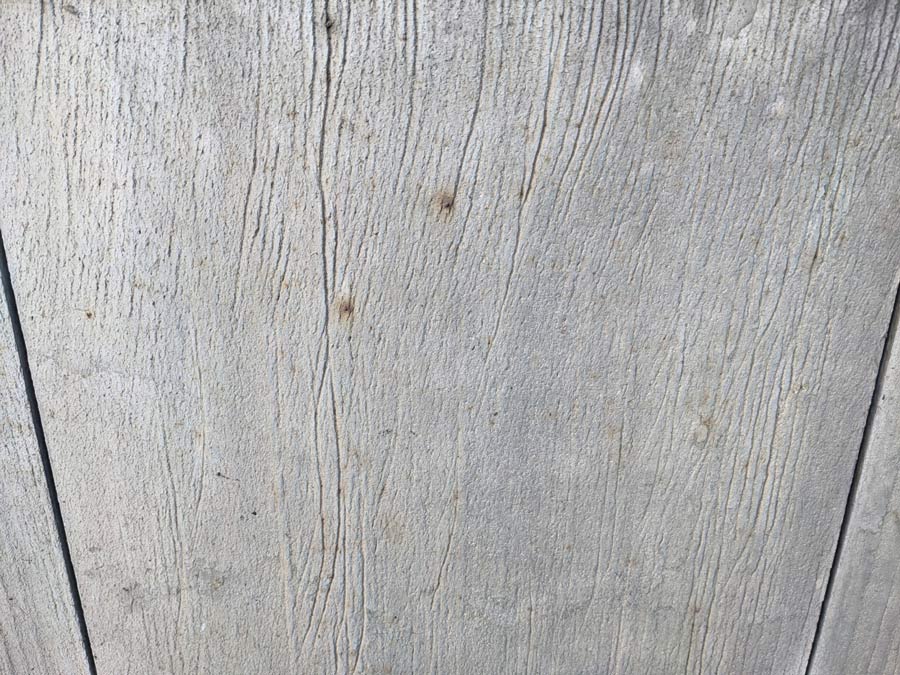The BGS office in Wales is based in Cardiff University’s Main Building on Park Place in the city’s rather grand Civic Centre. It’s an interesting part of the city with a history linked to shipping of south Wales coal and steel. The land now occupied by the Civic Centre was once part of the private grounds of the Bute family. The second Marquis of Bute built his first dock at Cardiff in the mid 19th century which catalysed the rapid growth of Cardiff as an important port town at that time.
The geology of Cardiff is not very visible from our city centre location but there are still interesting geological stories to be unearthed just a stone’s throw from the office. Starting at the front entrance (on the west side) of Main Building, is the grand frontage, faced in Portland Stone, just like all the other buildings in the Civic Centre. This stone is often used for public buildings and it’s a whitish grey limestone of Jurassic age quarried on the Isle of Portland in Dorset. The sediments which make up this rock were deposited in shallow tropical seas, and with a close look, you will see it’s made up of tiny round ooliths and fragments of shell, often more obviously seen where the stone is worn by weather or passage of feet. This finery is only skin deep and in less prominent places the Pennant sandstone blocks can be seen (more on this later). Through the door and down the green marble steps is the Viriamu Jones Gallery.
Viriamu Jones was the first principal of the University and his statue carved of white marble from Serevezza in Italy sits on a plinth of orange veined Arabescato marble. One of the highlights is the lovely staircase in the gallery which is tiled with striking pinkish alabaster. These are a local specialty being quarried just down the road in Penarth. The alabaster is probably better termed gypsum and is a product of evaporating lakes during the Triassic when Wales was part of a hot desert. I take great pleasure in using this staircase as I remember being told as a little girl by a very intimidating retired schoolteacher friend of my Grampa that only the lecturers were permitted to use them when she was a student so I in contrast should take every opportunity do so. And so I do, even if it means a detour!
Out through the west door, and cross Museum Avenue lies Alexandra Gardens, a favourite of student lunch breaks (and BGS staff) on a sunny day. There are many interesting and moving memorials and statues to explore here. The biggest is the Welsh National Memorial . Built in Portland Stone echoing the surrounding buildings, it takes the form of a circle of Corinthian columns surrounding a sunken court and fountain. Another interesting one, from a stone point of view, is the memorial to the Falklands conflict as it was shipped from the Falklands.
Exiting the gardens in the south east corner, Cardiff’s City Hall is on the right and the Amgueddfa Cymru – National Museum Wales on the left. In front of the museum, is another of Cardiff’s special building stones. They form a stone circle (which is not an ancient stone circle) but actually a ring of Gorsedd Stones. Stone circles such as these were erected here to commemorate the National Eisteddfod which was been held in Cardiff a number of times. This set (one of many in Cardiff and across Wales) was placed here in 1909. Eisteddfodau are a big deal here in Wales and are festivals held to celebrate the arts and Welsh Culture. These stones are Triassic aged breccias and conglomerates of the marginal facies of the Mercia Mudstone Group, known locally as “Radyr Stone”. On some of the standing stones you can still see the plug and feather drill marks of the quarrymen. Radyr Stone can be seen in many places as it tends to be used as red copings on walls and stringers breaking up faces of buildings.
The beautiful steps in front of the museum are made of Cornish granite of Bodmin Moor type, look for the porphyritic granite feldspar phenocrysts.
Across the main road (Park Place) is Park House, built in 1874 by William Burges for the 3rd Marquis of Butes land agent. Burges worked for the 3rd Marquis of Bute on many projects including the spectacular interiors of Castell Coch and Cardiff Castle, deigned in his gothic revival style. Park House is mainly constructed in Pennant Sandstone Formation sandstone with Bath Stone dressings and pinkish Scottish granites are used in the porch and veranda. The finer grained being from Craigton Quarry in Aberdeen and the coarser variety is from Peterhead. The majority of the building is constructed of Pennant Sandstone, it greenish grey blocks are very commonly used throughout south Wales.
Heading north, back towards the university, is the museum car park on the left, there are many lovely trees here including a Ginkgo biloba, who’s relatives are as fossils dating back to the early Jurassic and monkey puzzle (Araucaria) which date back to the Triassic. The earlier parts of Main Building, including where we have our offices, date to the 1920’s but this southern corner wasn’t constructed until the 1960s. Along this face of the building are grey slate panel which have rusty patches of weathered pyrite nodules. It is thought that these might be Dolemaen slates.
Continuing around the southern edge of the building ends up back to the west entrance at the start. I hope you’ve enjoyed this behind the scenes tour!
Further information
John W Perkins. 1984. The Building Stones of Cardiff. University Collage Cardiff Press.
Eric Robinson. 2005. Building Stones of Cardiff. South Wales Geologists Association.
About the author

Rhian Kendall
BGS Chief Geologist, Wales
Relative topics
You may also be interested in

Discovering Geology
Discovering Geology introduces a range of geoscience topics to school-age students and learners of all ages.
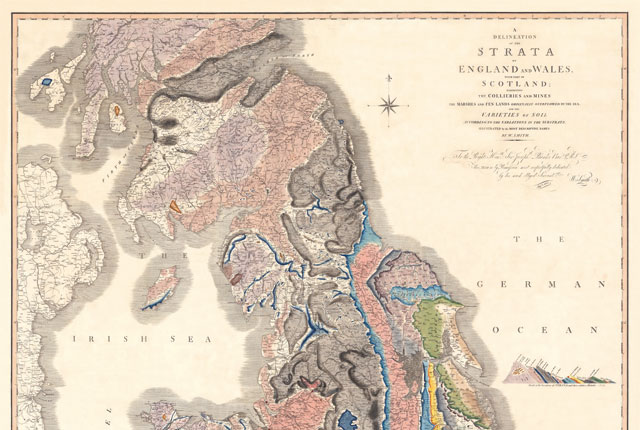
Maps and resources
Download and print free educational resources.
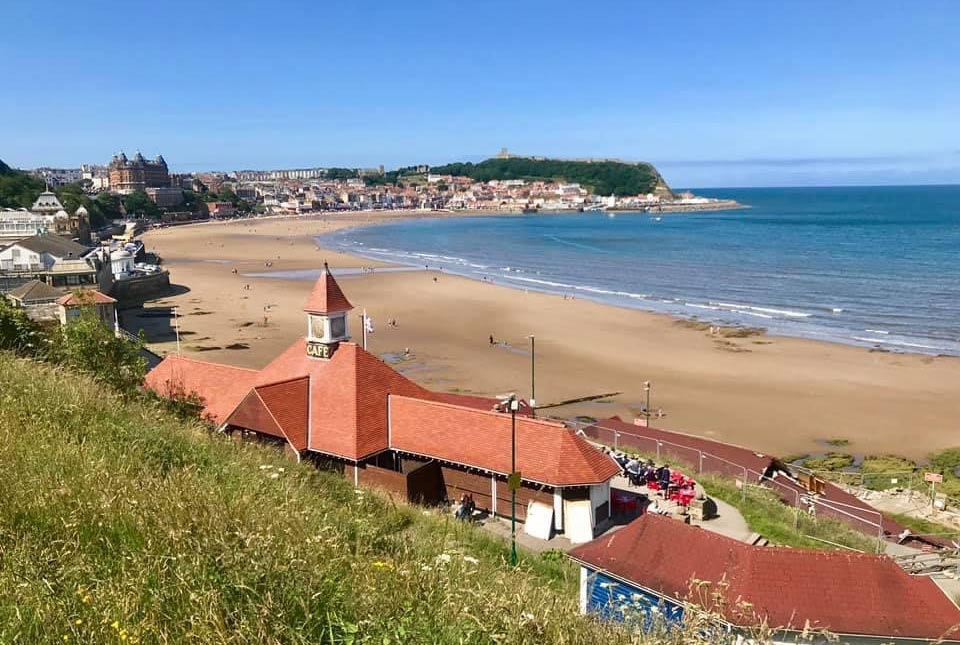
Postcard geology
Find out more about sites of geological interest around the UK, as described by BGS staff.


